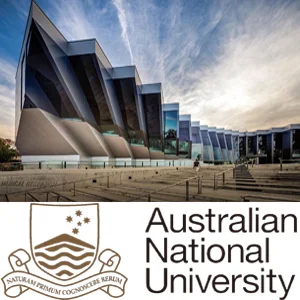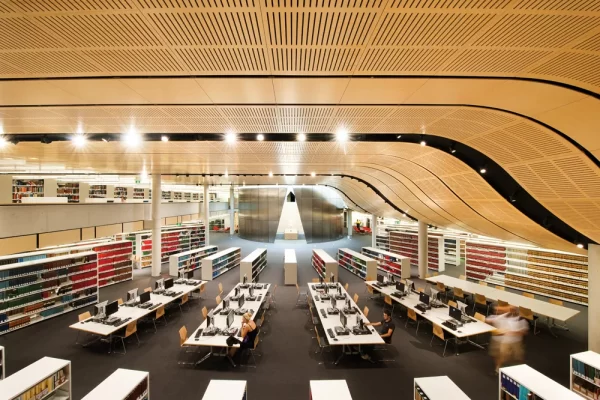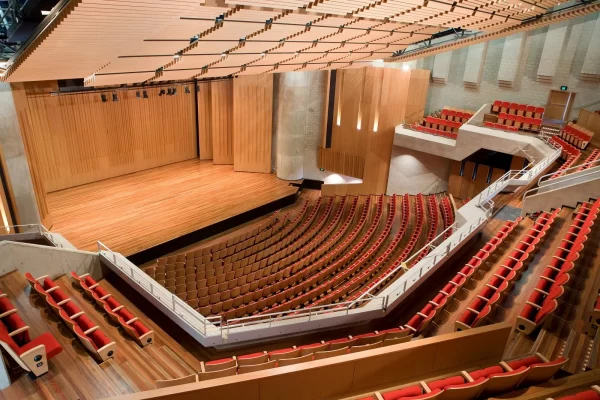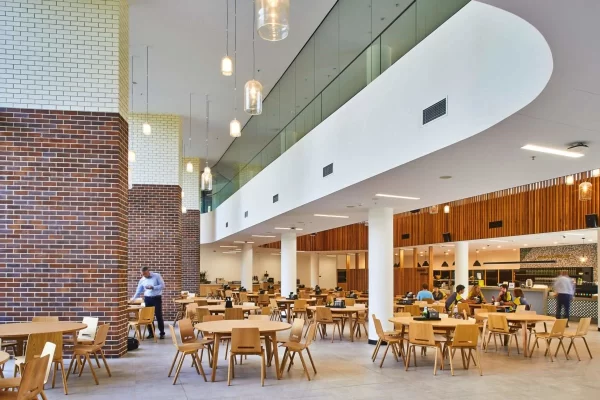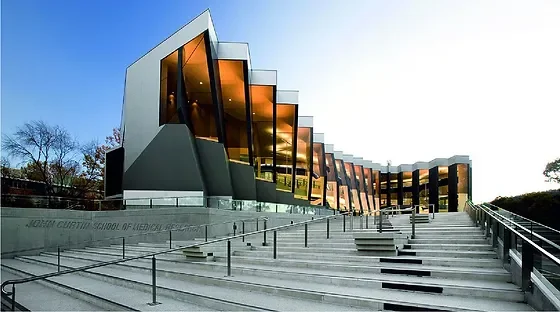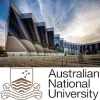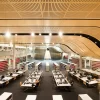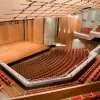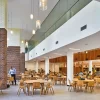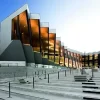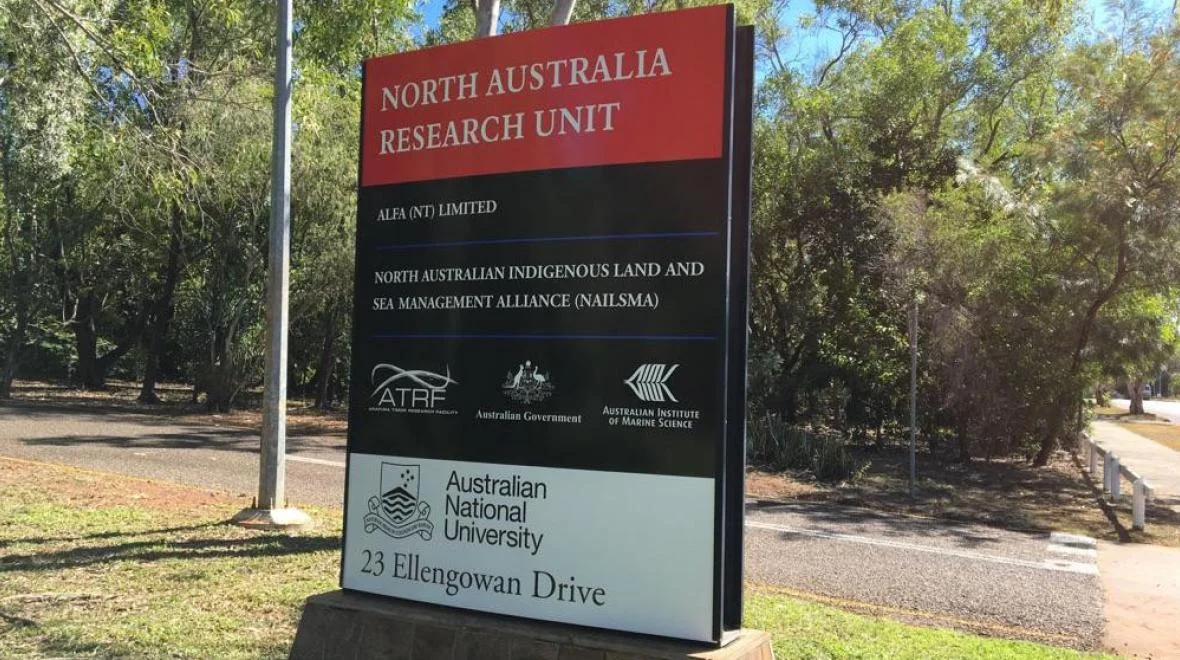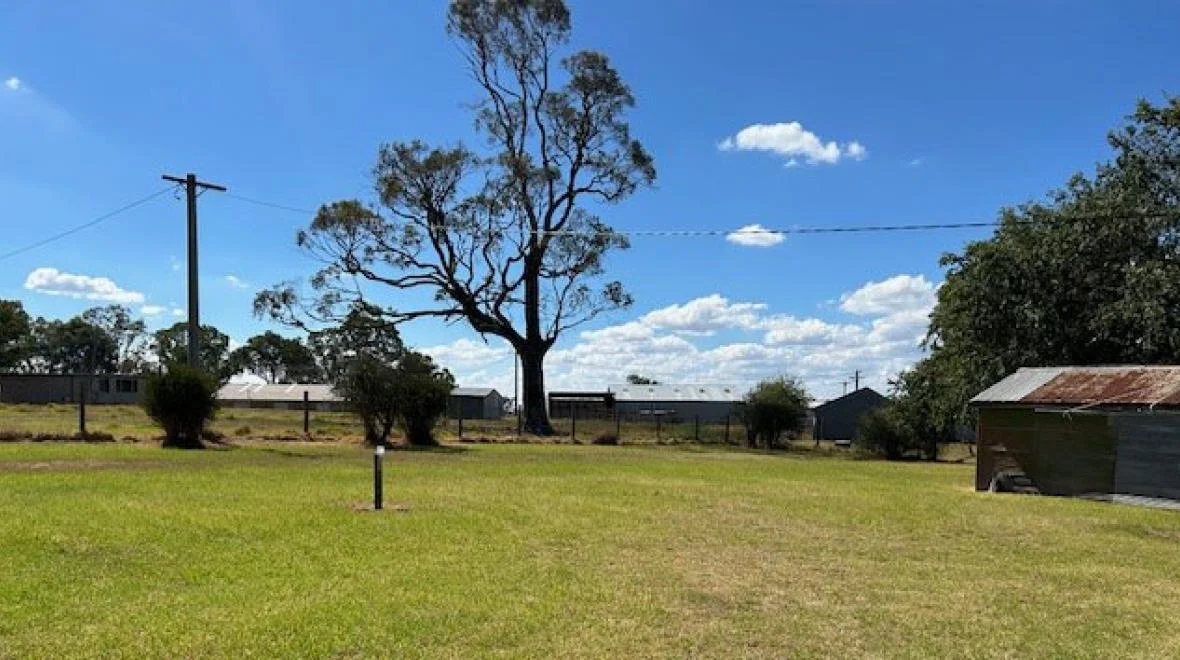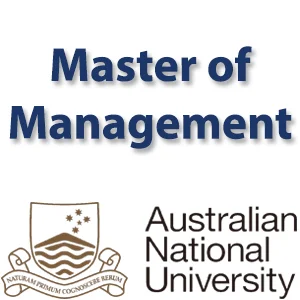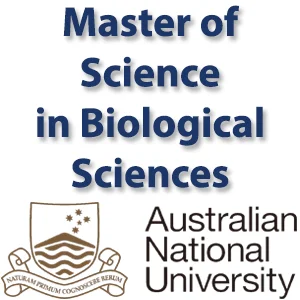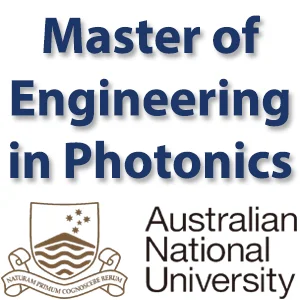About ANU
The Australian National University (ANU) is unlike any other university in Australia. Founded in 1946, in a spirit of post-war optimism, our role was to help realise Australia’s potential as the world recovered from a global crisis.
That vision, to support the development of national unity and identity, improve our understanding of ourselves and our neighbours, and provide our nation with research capacity amongst the best in the world, and education in areas vital for our future, has been our mission ever since.
It can be difficult work, but it’s work we proudly do-because connecting talented people with diverse perspectives, equipping and encouraging them to address the most complex of tomorrow’s problems, and ensuring Australia’s future is not just our approach-it’s also our national role and international responsibility as Australia’s national university, and it’s a responsibility from which we’ll never waver.
Our history
ANU is Australia’s national university and has a unique history among Australian universities. Learn about our history, and how it continues to influence the work we do here today on the page below. Visit Heritage management to learn more about our well preserved heritage and principles.
ANU celebrated its 75th anniversary on 1st August, 2021. Journey back in time with our photo gallery that celebrates some of the people, moments and memories that have shaped our history at the ANU.
University Executive
The ANU Executive Leadership Team is headed by our Vice-Chancellor and President Genevieve Bell. Genevieve and her team develop and implement strategies, policies and procedures to support ANU to meet its strategic goals and operational needs.
Learn more about the leadership team and the portfolios they oversee below.
Campuses & facilities
You’ll find ANU in the inner-city suburb of Acton, Canberra in the ACT. But we also have other campuses in the ACT, NSW and the NT that house some extraordinary facilities that help support our teaching, learning and research.
Acton campus
Our Acton campus is in the heart of Canberra – Australia’s capital city – in the Australian Capital Territory (ACT).
From here it’s an easy walk, bike ride or drive to some of Australia’s most significant political and cultural institutions including Australian Parliament House.
Amongst our modern lecture halls, libraries, laboratories, student residences and administration buildings, you’ll find all the conveniences of a small suburb including cafes, bars, supermarkets, child care centres, a newsagency, post office and even a medical centre.
The Acton Campus is well renowned for its landscape setting, with many remnant and planted trees and an obvious commitment to maintenance of open space. ANU maintains over 10,000 trees, including over 500 considered to be of exceptional significance because of their age, history or species and over 300 remnant trees predating European occupation of the area. The areas of Sullivan’s Creek and University Avenue are key features of the Acton Campus providing major avenues across the campus that contribute to its ‘park like’ nature and are also nationally and internationally recognised features of the Acton campus.
There are eight buildings or complexes of buildings currently listed on the Commonwealth Heritage List (CHL) and following the ANU Heritage Study (2012) over 60 more buildings/complexes have been identified as meeting the threshold for listing on the Commonwealth Heritage List.
Aboriginal heritage values at Acton campus
The area on, and surrounding, the Acton campus is of major importance to the local Aboriginal people. Historical and archaeological evidence has shown extensive use of this area. Consultation undertaken with the four Representative Aboriginal Organisations (RAO) of the ACT region has revealed the cultural significance of this place. Sullivan’s Creek was used as a pathway to the larger Molonglo River, and was also an important source of food. The land was carefully managed by Aboriginal people using ‘cool burning’ to support the growth of new vegetation, which would attract kangaroos for hunting. Black Mountain is a significant ceremonial and meeting place.
Historical evidence indicates that the Molonglo River Flats, Black Mountain and its spur, now known as the Acton Peninsula, were areas that are believed to have been favoured as meeting places by the Aboriginal people of the region (Gillespie 1979; Bluett 1954; Sydney Morning Herald 21st May 1927). The Canberra region was occupied by the Ngunawal/Ngunnawal; the Ngambri; and the Ngarigu people.
The timbered areas would have provided ample stocks of possum, kangaroo and wallaby whilst the Molonglo River was rich in Murray Cod. Proximity to water and protection from the prevailing winds would also have made the area at the base of Black Mountain (Black Mountain Peninsula) attractive for Aboriginal occupation. Material culture remains for the region include stone artefacts, spears and possum and kangaroo skin cloaks. The arrival of European settlers markedly decreased the local Aboriginal populations, displacing them from their traditional lands.
Kioloa Coastal Campus
Welcome to Kioloa Coastal Campus – the Australian National University’s coastal field station since 1975. Visit the ANU’s outdoor classroom at the New South Wales south coast to engage, teach and study surrounded by national parks and pristine beaches.
In the spirit of reconciliation, the Australian National University recognises that Kioloa is situated on Country for which the Murramarang people have been custodians for thousands of generations and on which they have performed age-old ceremonies of celebration, initiation and renewal. We acknowledge their living culture and unique role in the life of this region and offer our deep appreciation for their contribution to support our academic enterprise.
Visit us
Nestled among the spotted gum forests of Murramarang Nation Park and the pristine beaches of southern New South Wales, our campus is a great place to learn, teach, write and conduct research in a relaxed yet energizing environment away from busy campus life. Kioloa Coastal Campus is Australian National University’s coastal field station since 1975.
Set on 348 hectares of diverse country on the south coast of New South Wales, the Campus, a former homestead, is rich in European and Indigenous heritage and is home to an array of natural features, vegetation types and wildlife, which provide an ideal backdrop for immersive teaching and learning.
The station lies within easy driving distance from Canberra (2.5 hours), Wollongong (2.5 hours) and Sydney (3.5 hours). Our facilities support short and long-term research projects, undergraduate/postgraduate field trips and other cultural and educational activities. Groups also visit the campus for conferences, retreats, workshops, seminars and meetings and the quiet and peaceful atmosphere on campus is much appreciated by academics and students to focus on writing. Several research projects have been conceived sitting around the camp fire in the evenings.
I finished my grant application at Kioloa. This place here inspires me because of its tranquility and beauty. Thank you for creating such a wonderful study and writing environment.
Mount Stromlo Observatory
Mount Stromlo Observatory (MSO) is the home of the ANU Research School of Astronomy and Astrophysics. It’s about 18km southwest of Canberra city in the Australian Capital Territory (ACT). The ANU Mount Stromlo Observatory covers an area of 81 hectares on the summit of Canberra’s Mt Stromlo.
The administrative centre, the offices of the astronomers and students, the mechanical, electronic and optical workshops, and the computer laboratories are located at MSO.
MSO was badly damaged in the 2003 Canberra bushfires, so there are no longer working research telescopes here. All of the telescopes are now located at Siding Spring Observatory. However, the reconstruction of MSO has included the development of the Advanced Instrumentation Technology Centre and rebuilding the heritage Commonwealth Solar Observatory building.
Aboriginal heritage values at Mount Stromlo
The night sky has been used by Aboriginal people for thousands years, for navigation, as a calendar and within the stories of the Dreaming. Archaeological evidence of celestial calendars made of rocks in Victoria suggest that Aboriginal people may have been the world’s first astronomers. Aboriginal people in the Canberra region have indicated that the dark nebula of the Milky Way (the Emu in the Sky), and the Pleiades star cluster (the Seven Sisters) are of particular cultural importance.
A number of Indigenous sites have been located in the areas adjacent to Mt Stromlo, all of them either ‘Isolated Artefacts’ or small ‘Artefact Scatters’. On the Stromlo Campus itself two isolated unretouched flakes have been found (Faulkner 2004). In the region of Stromlo, there appears to be a strong tendency for sites to be located on level ground, closer to the river systems.The site is listed on the Commonwealth Heritage List.
North Australian Research Unit campus
ANU North Australian Research Unit (NARU) campus is a research facility in the Northern Territory with accommodation and other resources for researchers working in north Australia and the surrounding region.
NARU campus is about a 15km drive from Darwin city and about 8km drive from Darwin International Airport. It was established in 1973 to specialise in research in north Australia and to provide a base and logistic support for Canberra-based members of The Australian National University (ANU) and members of other Australian and overseas institutions undertaking research in North Australia. At the NARU campus, ANU has established the Arafura Timor Research Facility (ATRF), a joint venture between the Australian Institute of Marine Science and ANU.
ANU academic and research staff based at NARU remain part of their school while at NARU. This structure frees research staff to focus on their research with the full support of their peers. This dynamic structure also allows ANU to respond to new research opportunities in north Australia.
The NARU Steering Committee is responsible for providing advice and direction for the unit.
Cyclone season
The Top End of the Northern Territory is naturally prone to tropical cyclone events with some two to three cyclones affecting the Darwin region between November and April each year.
Please check with the Bureau of Meteorology for any current cyclone warning for the Darwin area prior to your departure.
In the event of a cyclone warning being issued by the Bureau of Meteorology the NARU campus will be closed up unto the cyclone warning has been downgrade or cancelled.
In the event of a cyclone occurrence in the Darwin area please confirm with NARU administration staff if the campus has reopened prior to your arrival.
Accommodation & resources
Accommodation, office space, field equipment and a seminar room are available for rent. Facilites are nestled among the tranquil surrounds of ANU Northern Campus and offer quiet and secure spaces to undertake research or hold seminars, meetings or workshops. Please visit the NARU Units page for more information about the facilities and booking procedures.
Aboriginal heritage values at NARU
The Darwin area is the land of the Larrakia people. It is highly likely that boundaries and ranges were fluid and varied over time. As a consequence, the patterns recorded in the recent past may represent only the situation at European contact.
Contact between white explorers and the Aboriginal people of the Darwin region occurred as early as 1837 when Captain J. Stokes made contact with ‘a party of aborigines’ (Stokes 1846). George Goyder, leader of the Northern Territory Survey Expedition of 1868 to 1870 reported continuous contact with Aboriginal people, describing them and making collections of spears, baskets and boomerangs (Stokes 1846; Kerr 1971). Stokes’ (1846) diaries contain detailed descriptions of the Aboriginal people of the Darwin area and beyond recording many instances of both friendly contact and unfriendly contact with deaths occurring amongst both groups.
Heavy development on the ANU property since its inception has likely destroyed any traces of Aboriginal sites or artefacts on the site, however the cultural connection to this area remains strong.
Location
NARU is easily accessible by car and is located next to the Charles Darwin University Casurina Campus. The campus is 15km from Darwin and approximately 8km from Darwin International Airport.
Our postal address is PO Box 41321,Casuarina NT 0810.
Siding Spring Observatory
The Siding Spring Observatory (SSO) is the largest optical observatory in Australia and is an important site for astronomy, astrophysics and space science in Australia. Along with several active telescopes owned by the Australian National University, the site is home to the Anglo Australian Telescope (AAT), many international research telescopes and commercially operated telescopes and is known as Australia’s foremost optical and infrared observatory.
Siding Spring is one of two key sites for the Research School of Astronomy and Astrophysics in Australia (RSAA). The site sits at the summit of Mt Woorut, NSW, and is set within the stunning National Heritage Listed Warrumbungle National Park, around 30 kilometres from the town of Coonabarabran.
The Siding Spring Observatory is located on Mount Woorut (at a height of 1165m) approximately 25 kilometres west of the town of Coonabarabran, NSW. Bordering the eastern edge of the Warrumbungle National Park. The ANU land holding covers an area of approximately 151 hectares and includes the Observatory Precinct on the summit of Mt Woorut as well as steep slopes to the north and south.
The location of the SSO and its extent of mid-sized telescopes is particularly valuable for institutional and commercial operators due to the lack of alternate facilities in this longitude.
- Opened in 1964
- owned by the Australian National University (ANU)
- Situated 1,165 metres (3,822 ft) above sea level
- Research carried out at SSO is varied, from probing the depths of the cosmos in search of ‘Dark Energy’ to searching the Milky Way for other planets and signs of life
- selected by ANU from many other possible locations due to the dark and cloud free skies and the low risk of future light pollution
Have you seen something in the sky and would like to find out what it is? Why not Ask an Astronomer?
Visit us
Tours As one of the most valuable observatory sites, Siding Spring has a lot to offer to its visitors. You will be able to find many informative and educational displays about telescopes and astronomy, with hands-on activities, augmented reality and multimedia presentations for the whole family in the Café and Visitor Centre. Visit Dark Sky Traveller to find out more about opening hours and tours for all ages
Accommodation
The Lodge – make a booking
The new Lodge offers 18 private ensuite double rooms, combined with a library, lounge and seminar room, offering spectacular views over the Warrumbungle National Park. Bookings can be made via the reservation request form.
Please note that overnight accommodation offering is restricted for research activities on the site.
History
Siding Spring Observatory has a rich history and many notable discoveries. Discover our history.
Aboriginal heritage values at Siding Spring
The Observatory is located on the traditional country of the Gamilaraay/Kamilaroi language group who have occupied this area for at least 20,000 years. A traditional travel route passes through the mountains, with the distinctive peaks used for navigation. Dreaming stories, ceremonies and art reveal that the Aboriginal people of Australia could have been the world’s earliest astronomers. They used the stars to guide them, to track the seasons, and to ascertain the availability of certain foods.
Spring Valley Farm
Spring Valley Farm is located southwest of Canberra city in the Australian Capital Territory (ACT). Spring Valley Farm is leased by the ANU and is used for undertaking research activities.
Accessing Spring Valley Farm
Spring Valley Farm is accessible by any ANU School or College that would like to undertake University research activities.
To gain access to the Farm, you will need to complete the Request to Access Spring Valley Farm form.
An overarching Risk Assessment for Spring Valley Farm has been undertaken, schools and colleges should review this risk assessment when completing their own to ensure that all risks identified have been included in the risk assessment.
Ensure that you provide as much information as possible and attach all risk assessments, safe work procedures and any additional documentation relevant to the activities being undertaken.
The information will be reviewed by the Facilities and Services Division WHS Team who will reply with any comments/questions as soon as practicable. Please allow 5 business days for a response.
Once your WHS documentation has been reviewed you will be notified of the outcome and what is required to access the farm.
If the activities that you are undertaking change, or you would like to undertake additional activities you will need to send an email to Spring Valley Farm advising of the proposed changes to ensure the activities are in line with the lease requirements of the farm.
Site specific induction
Prior to accessing the site all persons that will be attending will need to complete the site-specific induction for Spring Valley Farm.
To access the induction, go to contractor induction login area. At the bottom of the Login Screen, locate “First Time here? Click to Register”- Select Spring Valley Farm from the list and complete the registration form. We strongly encourage that you provide a mobile number to enable us to contact you at the farm in the event of an emergency.
Completing this induction does not void any induction or instructions provided independently by the school/colleges and will need to be undertaken in addition to those.
Once induction has been completed you will be provided with the information required to access the farm. Please do not pass this information/access code to anyone that has not requested access through the formal channels or not completed the induction.
The Site-Specific Induction for Spring Valley Farm should be completed annually, and you will be sent a reminder advising that you need to complete it.
Check in/check out
All persons accessing the farm must use the QR code located on a building or gate to check in and out every time you attend the property. Scanning the QR code enables us to see who is on the farm in the event of an emergency and contact you to advise of the situation and what you need to do.
Bookings
When attending the farm, you must book usage through the Spring Valley Farm calendar. Please read the Adding Spring Valley Farm calendar in Outlook to add the calendar. Ensure that you include the area of the farm that you will be visiting. Using the calendar is to ensure visibility of attendees on any day. Multiple bookings can be made for the one day for different locations on the farm.
Access codes/keys
When your request to access the farm has been approved and you have completed the online induction, you will be provided with the access codes to the main gate and lock key boxes where required.
Please do not pass this information/access code to anyone that has not requested access through the formal channels or not completed the induction.
Arriving at the farm
Once you have entered the Property, the main gate must always be locked and remain locked, this is to ensure that the farm remains secure and for your safety. There may also be several users onsite at any time. This removes the assumption that someone else will lock the gate when they leave.
Vehicles must not be driven or parked in paddocks or on very high grass. The heat from underneath vehicles has the potential to ignite and start a grass fire.
If access into paddocks with a vehicle is required, prior approval must be sought.
Maintenance
For any maintenance issues please email Spring Valley Farm with the details and the team will organise someone to attend to the farm and rectify the issue.



